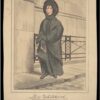
Rebecca Nesvet, “Miss Whitehead, ‘The Bank Nun’”
An urban legend maintains that early in the nineteenth century, one Miss Whitehead, colloquially known as “the Bank Nun,” frequently visited the Bank of England to accuse that institution of destroying her brother, a financial forger. This essay traces the evolution of this legend. I contend that in 1837, an obscure comic sketch reacted to that year’s major financial crisis by dredging up the Romantic-era case of financial forger Paul Whitehead and focusing on his surviving sister. Displacing her brother’s notoriety onto her, the sketch reinvents her as “the Bank Nun,” a grotesque magnet for lingering Romantic-era anxieties about the circulation of paper credit, financial forgery, and women. A succession of plagiarisms, retellings, and reappraisals of this ephemeral sketch and its portrait illustration made the Bank Nun a folk heroine of enduring resonance. Via this iconic figure, Romantic-era economic controversy haunts London today.
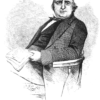
Janice Schroeder, “The Publishing History of Henry Mayhew’s London Labour and the London Poor”
Versions of Henry Mayhew’s massive social survey London Labour and the London Poor appeared in several publishing formats, including newspaper column, weekly serial, live stage show, and bound volume. This article traces the republication and remediation of London Labour alongside Mayhew’s repackaging of his interviews with London “street-folk” from 1849 onwards. I offer a succinct, accessible account of the complex publishing history of the text, from print newspaper column to digital edition.
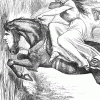
Janice Carlisle, “On the Second Reform Act, 1867”
The Second Reform Act, arguably the signal political event of the 1860s, enfranchised large numbers of working-class men by setting a new financial standard for the suffrage. It became law only after members of Parliament vigorously debated the failed reform measure proposed by the Liberal party in 1866 and the successful, though much amended, Conservative bill of 1867. The law created new problems when it terminated compounding, the customary practice by which landlords added to their tenants’ rent the sums that covered the poor rates and other taxes that those tenants owed. The Second Reform Act therefore exemplifies the way in which one piece of reforming legislation in the mid-Victorian period often created the need for another. Completing at least some of the work that the 1867 act had been expected to do, the Assessed Rates Amendment Act in 1869 reinstated compounding; in doing so, it liberalized the qualifications for voting in the boroughs of England and Wales in a way that moved Britain toward the goal of universal (manhood) suffrage.
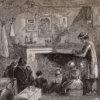
Barbara Leckie, “Prince Albert’s Exhibition Model Dwellings”
This paper discusses Prince Albert’s Exhibition Model Dwellings built just off the grounds of the Great Exhibition in 1851. These model dwellings, designed by the architect Henry Roberts, contributed to growing efforts to place the mid-century crisis in housing of the poor at the forefront of public attention. They also made vivid the intersection of print culture and the built environment in three ways. First, they were a response to decades of print exposés of existing housing of the poor. Second, Roberts wrote a pamphlet, a how-to guide of sorts, on the Exhibition Model Dwellings as well as a book on model dwellings in general, The Dwellings of the Labouring Classes, that went into four editions. Finally, the Exhibition Model Dwellings were the topic of many contemporary print commentaries. These latter print commentaries will be the focus of this article. I want both to return the Exhibition Model Dwellings to the prominence they carried in the mid-Victorian period and to explore their contribution to the period’s conflicted response to the crisis in existing housing of the poor with respect to transparency, health, subject formation, and national identity.
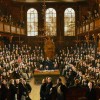
Carolyn Vellenga Berman, “On the Reform Act of 1832”
This entry examines a key moment for the British national imagination: the Great Reform Act of 1832 (or First Reform Act). It explores this crisis in aristocratic rule through the prisms of class, religion, geography, and the rise of the popular press, highlighting the concept of “representation of the people” enshrined by the act and the Age of Reform that it inaugurated.

Elaine Hadley, “On Opinion Politics and the Ballot Act of 1872”
This article argues that opinion politics is one of the most significant developments in the nineteenth century, and does so by focusing in part on the Ballot Act of 1872. It provides a quick overview of the scene of elections prior to the reforms of 1832 and 1867 in order to highlight the emergence of the opinionated, purposive individual as the agent and medium of politics. it describes the mid-century variant of this political individual, the focus at this moment on the cognitive procedures of opinion formation, and the stresses this commitment produced in the political domain. It also briefly describes the late-century changes in opinion politics, and notes its continued salience in present-day politics.

Herbert F. Tucker, “In the Event of a Second Reform”
Between the 1867 passage of the Second Reform Bill and that of the Forster Education Bill in 1870, Britain undertook its modern metamorphosis into an effectively secular and democratic state, in a legislative process concurrently abetted and assessed by contemporary productions in literature. Thick description of this process illustrates by example this entry’s framing questions about the nature and the scale of an “event.”
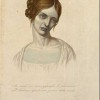
Pamela K. Gilbert, “On Cholera in Nineteenth-Century England”
This essay will focus on how the British understood and responded to the cholera epidemics that swept Britain four times from the early eighteen-thirties to the mid-eighteen-sixties, with special attention to the first epidemic and how it related to political Reform.
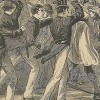
Chris R. Vanden Bossche, “On Chartism”
The Chartists sought universal male suffrage because they regarded parliamentary legislation the principal means of enacting social reform. Precisely because they did not possess the right to vote, however, they had to employ alternative forms of action. This led to debates within the movement about whether they should seek to obtain the vote through persuasion—moral force—or though insurrection—physical force. The newspaper press representing the governing elites not only condemned the threat of physical force as unconstitutional, but also depicted moral force as essentially violent and therefore illegitimate. In response, the Chartist press produced a rhetoric representing physical force as a moral right in the face of an illegitimate governing elite. However, the effectiveness of this rhetoric depended on a strategy of indefinitely deferring the use of physical force, the shortcomings of which were manifested in the aftermath of the rejection of the Chartist petitions of 1839 and 1842.
